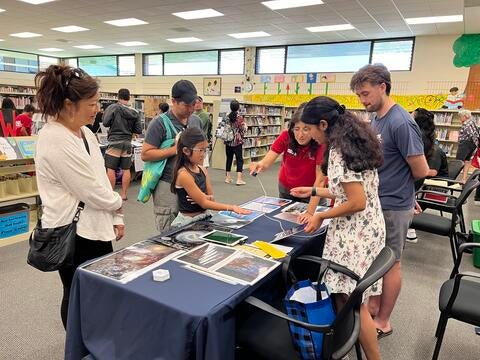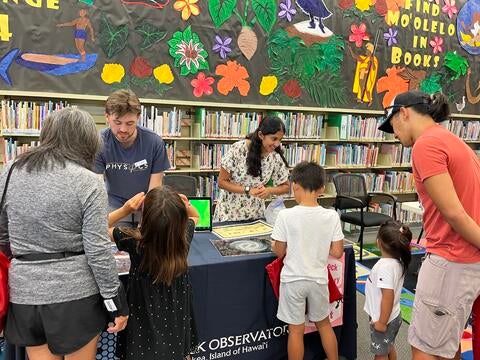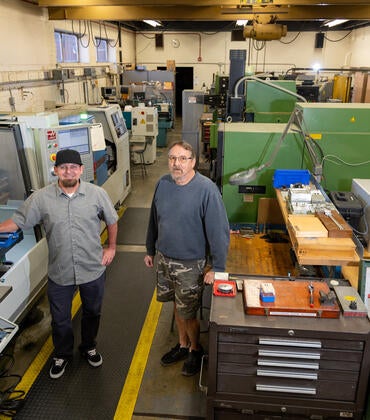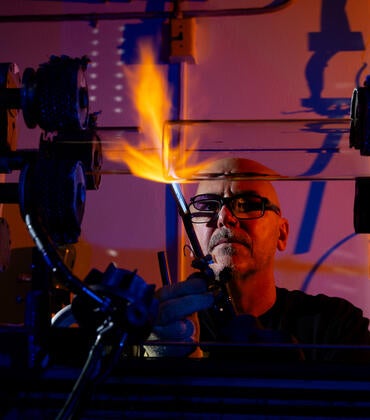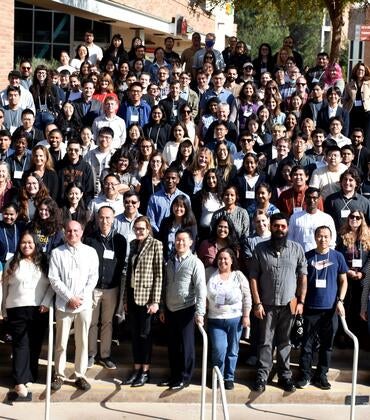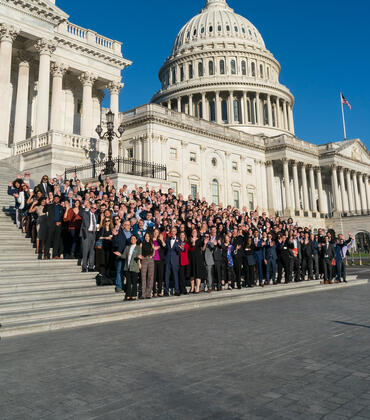Love for astronomy begins in childhood. With that in mind, three UC Riverside astronomers gave a presentation on August 3 to hundreds of children on the Big Island of Hawaiʻi on what infrared radiation is and how telescopes use it.
Infrared radiation is part of the electromagnetic spectrum that exists between visible light and radio waves. Invisible to human eyes, it can be detected as heat. By detecting near infrared and mid-infrared wavelengths, telescopes like the James Webb Space Telescope can reveal objects in the universe to astronomers that optical telescopes cannot see.
“We participated at the AstroBash in Waimea, a four-hour outreach event, where several groups had exhibits about telescopes or astronomy,” said Gabriela Canalizo, a professor of physics and astronomy at UCR, who attended the outreach event along with her graduate students Michael McDonald and Archana Aravindan. “We were representing the W. M. Keck Observatory, and we had an infrared demo for the audience. We love doing such outreach and value the importance of having good relationships with the community in Hawaiʻi.”
More than 300 children — from toddlers to teenagers — and adults attended AstroBash, a NASA@My Library event organized by the Thelma Parker Memorial Public Library. Canalizo’s team volunteered for the astronomy celebration as part of the Pilina and Kōkua Initiative, a collaboration between Keck Observatory in Hawaiʻi, Caltech Optical Observatories, and the University of California Observatories, to cultivate a deeper connection to Hawaiʻi Island. Called “The Magic of Infrared,” the hands-on activity that Canalizo and her students put together captured everyone’s attention.
The demo involved the use of infrared cameras attached to iPads. Objects, such as one’s hands waving inside a black trash bag, could be seen as infrared images on the iPads but were invisible to the naked eye. When Canalizo walked her fingers on a table, the fingerprints they left were captured by the infrared cameras.
“The small ‘footprints’ on the table especially delighted the children,” she said. “We got to engage in conversations with them about infrared and the observations that the James Webb Space Telescope is able to make because of it. We welcome doing more such outreach in the future.”
Matthew Shetrone, deputy director of the University of California Observatories, said in-person outreach is vital for sharing science with the public and fostering meaningful engagement with local communities about astronomy. Astronomers have gotten into the habit, he added, of observing on the Keck I and Keck II telescopes through their remote observing stations or at home on their computers.
“This disconnects us both from the Keck staff and the Hawaiʻi Island communities,” he said. “The UC Observatories is funding observers like Dr. Canalizo and her team to do their science on Hawaiʻi Island and to purposefully connect with the local communities. AstroBash was the UC Observatories’ first such event. We plan to have more groups of observers participate in the Pilina and Kōkua Initiative this year.”
Canalizo and McDonald were supported by the Pilina and Kōkua Initiative. Aravindan was supported by a UCR grant.

